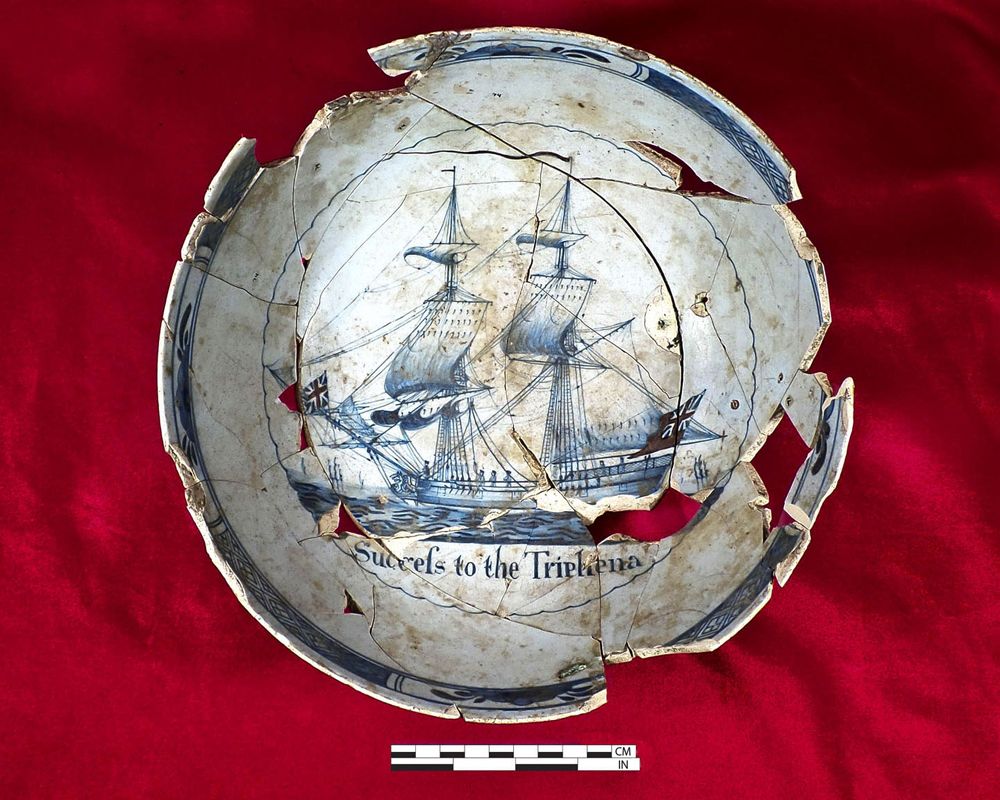
A treasure trove of artifacts tossed down the loo is revealing the secret life of pre-Revolutionary America.
The nearly 300-year-old privies, which were uncovered in the heart of Philadelphia, have yielded more than 82,000 artifacts that span nearly three centuries, from the city's pre-Revolutionary roots to the modern day. Among the historic treasures were a ceramic punchbowl that provides a snapshot of Revolutionary America, shattered glasses from a back-alley tavern and the foundation of the city's first skyscraper, which was erected in 1850.
"We can tell the whole story of Philadelphia," said Rebecca Yamin, the lead archaeologist on the project. [Toilet Treasures: See Amazing Artifacts Preserved in Philadelphia Privies]
Accidental find
The team uncovered the toilets before the construction of a new building for the Museum of the American Revolution, which will be just steps away from Independence Hall in Center City, Philadelphia. Because the site lies atop 26 historic land parcels, archaeologists expected to find historic artifacts, Yamin said.
While surveying, they discovered several privies on the old property (essentially brick-lined vault toilets). To excavate them, the archaeologists had to go deep into the toilet shafts, spraying water into piles of excrement to break it up.
"It doesn't smell like fresh human waste, thank goodness, but it does have a characteristic smell," Yamin told Live Science.
Though the team expected to find interesting artifacts, they were unprepared for the sheer volume of detritus they uncovered, Yamin said. Because there was no municipal trash service for much of the time the toilets were in use, people didn't just do their business in the privies; they also threw their refuse there.
Sign up for the Live Science daily newsletter now
Get the world’s most fascinating discoveries delivered straight to your inbox.
As a result, the new finds represent an unfiltered, hidden view of city life.
"The wonderful thing about doing this kind of archaeology is that we're going where nobody thought we would be going," Yamin told Live Science. "The people who were throwing this out in their privy certainly didn't think we would come around and dig it up."
A walk through history
Amazingly, three centuries' worth of pee and poo creates a sticky, gooey coating that actually acts as a fantastic preservative for artifacts. The finds create a historic timeline for the city.
Some of the earliest artifacts are pieces of waste from the privies of ancient tanneries, which were among the first industries in the city. The team also uncovered fragments of broken pottery and cups from an illegal back-alley tavern that was run by a woman during Revolutionary times.
"You can really feel the people drinking and talking politics and arguing," Yamin said.
One of the most exciting finds was a shattered Delft punchbowl with the words "Success to the Tryphena" emblazoned on it. The Tryphena was a merchant ship that regularly sailed to Liverpool, England. At one point, the Tryphena carried petitions from merchants hoping to repeal the Stamp Act, which required colonists to pay a tax on every scrap of paper.
Privies behind an area called Carter's Alley produced typeface going back to the 1760s that came from several print shops. Several decades later, the city's newspaper, the Philadelphia Inquirer, got its start in that same alley.
Later, the site was home to the Jayne Building, the city's first skyscraper, which sold over-the-counter medicines like deworming medicines. Researchers also uncovered myriad shells that were likely used by a button factory on the premises from just before World War I until World War II.
Original article on Live Science.

Tia is the managing editor and was previously a senior writer for Live Science. Her work has appeared in Scientific American, Wired.com and other outlets. She holds a master's degree in bioengineering from the University of Washington, a graduate certificate in science writing from UC Santa Cruz and a bachelor's degree in mechanical engineering from the University of Texas at Austin. Tia was part of a team at the Milwaukee Journal Sentinel that published the Empty Cradles series on preterm births, which won multiple awards, including the 2012 Casey Medal for Meritorious Journalism.











